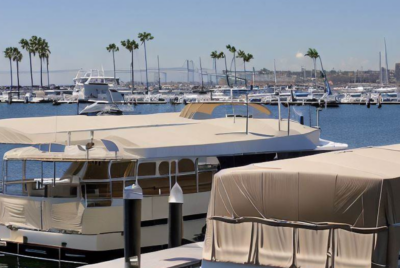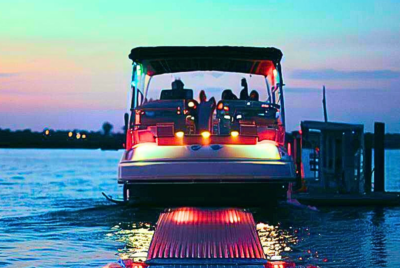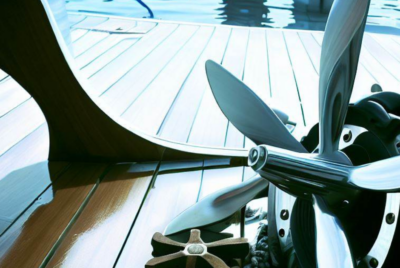Pontoon Boat Anchor: A Guide to Choosing and Using the Right Anchor
I understand the importance of a reliable anchor when it comes to enjoying a worry-free boating experience. The right pontoon boat anchor provides stability, security, and peace of mind, whether you’re fishing, swimming, using your pontoon boat slide or simply relaxing on the water. In this guide, I’ll share valuable insights and recommendations on choosing and using the perfect anchor for your pontoon boat.
Understanding Pontoon Boat Anchoring Needs
When it comes to anchoring a pontoon boat, there are specific needs and challenges to consider. Unlike traditional boats, pontoons have a flat and wide deck design, which can make them more susceptible to drifting in wind or current. This means that selecting the right anchor is crucial for keeping your pontoon boat in place and ensuring a safe and enjoyable experience on the water.
5 Types of Pontoon Boat Anchors
There are several types of anchors available for pontoon boats, each with its own set of advantages and disadvantages. Let’s explore some popular options:
1. Fluke Anchors: These lightweight and compact anchors are commonly used for small to medium-sized pontoon boats. They offer good holding power in sandy or muddy bottoms but may struggle in rocky or weedy conditions.
2. Mushroom Anchors: Mushroom anchors have a round, weighted bottom with a wide surface area. They provide excellent holding power in softer bottoms like sand or mud. However, they may not be as effective in rocky or weedy areas.
3. Grappling Anchors: Grappling anchors, also known as claw anchors, feature multiple flukes or tines that dig into the bottom. They are well-suited for various bottom conditions and offer reliable holding power. However, they can be bulkier and heavier compared to other anchor types.
4. Plow Anchors: Plow anchors are designed to penetrate different bottom surfaces, including sand, mud, and grass. They offer excellent holding power and are commonly used in larger pontoon boats. However, they can be more expensive and require proper stowage due to their shape.
5. Delta Anchors: Delta anchors are known for their sharp, triangular flukes, which provide strong holding power. They are effective in a variety of bottom conditions and are popular among pontoon boat owners seeking reliable anchoring.
When selecting an anchor for your pontoon boat, consider factors such as the size and weight of your boat, the typical water conditions you’ll encounter, and the type of bottom surface where you’ll anchor most frequently. It’s important to choose an anchor that matches your specific boating needs.
Factors to Consider When Choosing an Anchor
Choosing the right anchor goes beyond the type or design. Several factors come into play when making a decision. Consider the following:
1. Boat Size and Weight: The size and weight of your pontoon boat will determine the anchor size and holding power required. Larger boats will need heavier anchors to ensure secure anchoring.
2. Water Conditions: The type of water conditions you’ll encounter, such as tides, currents, and wind strength, should influence your anchor selection. In areas with strong currents or high winds, a more substantial anchor will be necessary.
3. Anchor Holding Power: An anchor’s holding power refers to its ability to stay firmly secured to the bottom. Look for anchors with high holding power ratings, especially if you frequently anchor in challenging conditions.
4. Anchor Material: Anchors are typically made of galvanized steel, aluminum, or a combination of both. Galvanized steel offers durability and corrosion resistance, while aluminum anchors are lightweight and easier to handle.
5. Anchor Design and Features: Consider features like adjustable fluke angles, pivot points, or roll bars, as they can enhance the anchor’s performance and ease of use.
Taking these factors into account will help you choose an anchor that matches your pontoon boat’s specifications and ensures a secure and reliable anchoring experience.
7 Best Practices for Anchoring a Pontoon Boat
Once you have selected the appropriate anchor for your pontoon boat, it’s important to know how to use it effectively.
Follow these best practices for proper anchoring:
1. Choose the Right Anchoring Spot:
Look for a suitable location with a bottom surface conducive to anchoring, such as sand or mud. Avoid rocky areas or places with heavy seaweed.
2. Prepare the Anchor Line:
Attach the anchor securely to the anchor line, ensuring it is properly fastened and won’t detach during use. Consider using a stainless-steel shackle or a secure knot.
3. Determine the Anchor Line Length:
The length of the anchor line should be determined by the water depth and the expected conditions. A general rule of thumb is to use a scope of 7:1, meaning the length of the line should be seven times the depth of the water.
4. Set the Anchor:
Slowly lower the anchor over the bow of the pontoon boat, ensuring the line is paying out smoothly. Allow the anchor to reach the bottom, and then slowly back the boat away from the anchor spot while letting out the anchor line. This process helps to set the anchor firmly in place.
5. Test the Anchor Holding:
Once the anchor is set, gradually increase the throttle to test its holding power. Observe the boat’s movement to ensure the anchor is holding securely. If the boat drifts or the anchor slips, you may need to reset or consider using a different anchor type.
6. Monitor Weather Conditions:
Keep an eye on changing weather conditions, especially wind and currents. Sudden shifts in weather can affect the anchor’s holding power. Be prepared to adjust the anchor or relocate if necessary.
7. Retrieving the Anchor:
When it’s time to leave, slowly approach the anchor spot and reduce the throttle. Use a steady and controlled motion to retrieve the anchor by pulling it vertically. Avoid jerking or yanking the line, as it may damage the anchor or the boat.
By following these best practices, you can ensure a safe and efficient anchoring experience for your pontoon boat.
Anchor Safety and Precautions
While using a pontoon boat anchor, it’s essential to prioritize safety.
Consider the following safety tips and precautions:
1. Proper Anchor Line Length: Ensure the anchor line is long enough to allow for changes in water depth due to tides or current. Too short of a line may result in the anchor losing its hold.
2. Weight Distribution: Distribute the weight evenly across the pontoon boat to prevent listing or tilting. Proper weight distribution helps maintain stability while anchored.
3. Weather and Water Conditions: Stay informed about weather forecasts and water conditions. Avoid anchoring in areas prone to strong currents, storms, or shallow waters that could cause the boat to ground.
4. Regularly Inspect the Anchor and Line: Check the condition of the anchor and anchor line regularly. Look for signs of wear, such as fraying or corrosion, and replace any damaged components promptly.
5. Always Use Personal Flotation Devices (PFDs): Ensure that everyone onboard wears a suitable personal flotation device. Safety should be a priority when boating, including while anchored.
By adhering to these safety guidelines, you can minimize risks and ensure a safe and enjoyable time on your pontoon boat.
Anchoring Accessories and Additional Equipment
Several accessories and additional equipment can enhance your pontoon boat anchoring experience. Consider the following options:
Anchor Buoys: Attach an anchor buoy to the anchor line to mark the anchor’s location visually. This makes it easier to spot the anchor and avoid potential entanglements when retrieving it.
Anchor Retrieval Systems: Invest in an anchor retrieval system, such as an electric winch or a pulley system. These systems make anchor retrieval effortless and save you time and effort.
Anchor Winches: Install an anchor winch on your pontoon boat to automate the anchor lifting process. This device simplifies anchor retrieval and reduces strain on your back and arms.
Anchor Stowage Solutions: Use dedicated anchor storage lockers or compartments on your pontoon boat to keep the anchor and anchor line neatly organized and secured.
These accessories and equipment can enhance convenience and efficiency when it comes to anchoring your pontoon boat.
Maintenance and Storage of Pontoon Boat Anchors
To prolong the lifespan of your pontoon boat anchor and ensure optimal performance, follow these maintenance and storage tips:
Rinse the Anchor: After each use, rinse the anchor with freshwater to remove any saltwater or debris that may cause corrosion. Pay attention to crevices or joints where sediment can accumulate.
Inspect for Damage: Regularly inspect the anchor for signs of wear, such as rust, corrosion, or bent flukes. Replace any damaged or worn-out parts to maintain the anchor’s effectiveness.
Clean and Lubricate: Periodically clean the anchor using a mild detergent and a brush to remove any stubborn dirt or grime. Apply a thin layer of marine-grade lubricant to moving parts or hinges to prevent rust and ensure smooth operation.
Proper Storage: Store the anchor in a dry and well-ventilated area to prevent moisture buildup and corrosion. Avoid leaving the anchor exposed to the elements for extended periods. Consider using anchor bags or dedicated storage compartments to protect the anchor from damage and ensure it remains in good condition.
Regular Line Inspection: Inspect the anchor line for fraying, abrasion, or weak spots. Replace the line if any signs of damage are present. Properly coil and store the anchor line to prevent tangling or knotting.
By following these maintenance practices and storing your pontoon boat anchor correctly, you can extend its lifespan and ensure reliable performance when you’re out on the water.
Conclusion
Choosing the right pontoon boat anchor is crucial for a safe and enjoyable boating experience. By considering factors such as boat size, water conditions, and anchor holding power, you can select an anchor that suits your specific needs. Remember to follow best practices for anchoring, prioritize safety, and consider using accessories and additional equipment to enhance your anchoring setup. With proper maintenance and storage, your pontoon boat anchor will serve you well for many memorable boating adventures.
FAQs
1: Can I use a regular boat anchor for my pontoon boat?
It’s generally recommended to use an anchor specifically designed for pontoon boats. Regular boat anchors may not provide the necessary holding power or be suitable for pontoon boat characteristics.
2: What anchor size should I choose for my pontoon boat?
The anchor size depends on your pontoon boat’s weight and the typical conditions you’ll encounter. It’s essential to consult the manufacturer’s recommendations or seek advice from boating experts for the appropriate anchor size.
3: How do I know if the anchor is properly set?
You can test the anchor’s holding power by gradually increasing throttle after setting it. Observe the boat’s movement. If it stays in place without significant drifting, the anchor is likely properly set.
4: Can I use multiple anchors for added stability?
In some cases, using multiple anchors can provide added stability, especially in challenging conditions. However, it’s important to ensure proper anchor placement and coordination to avoid complications or entanglement.
5: How often should I inspect and maintain my pontoon boat anchor?
Regular inspections should be conducted before each boating season and after every use. Maintenance tasks such as cleaning, lubricating, and checking for damage should be performed periodically to ensure the anchor’s optimal performance.




